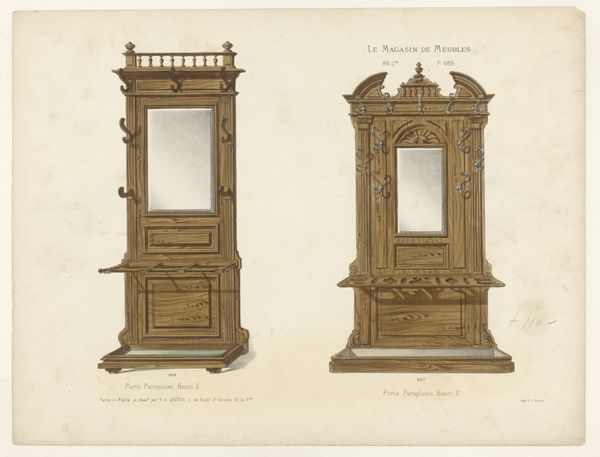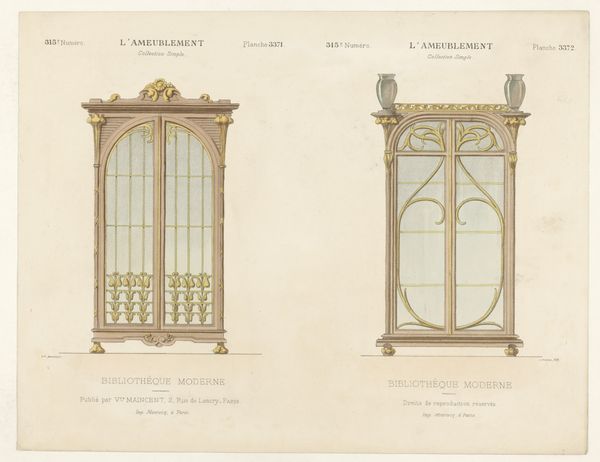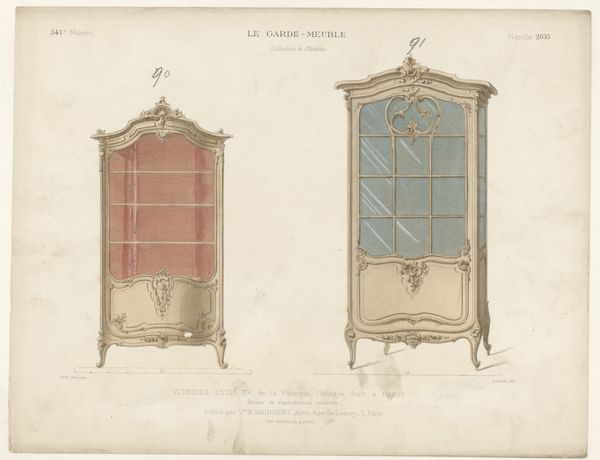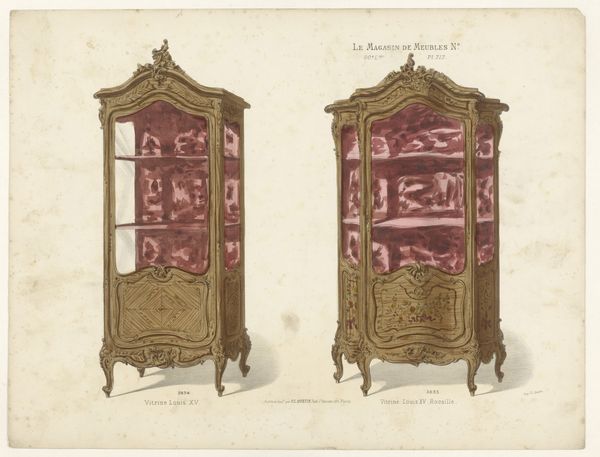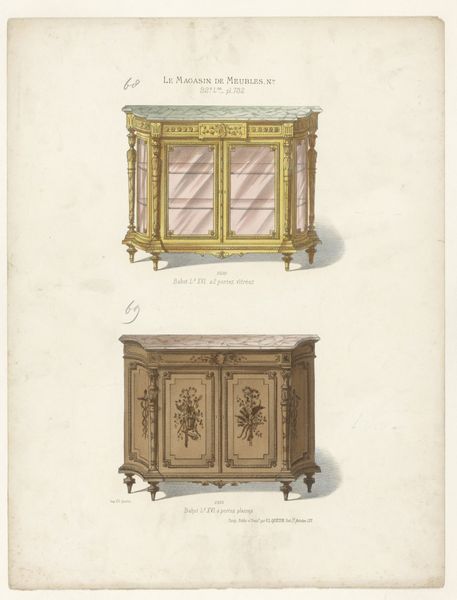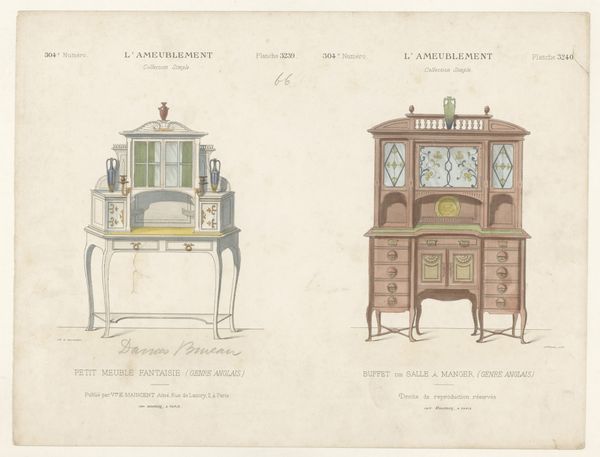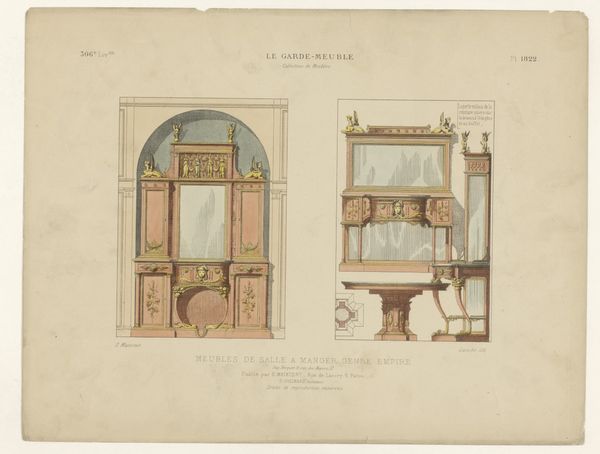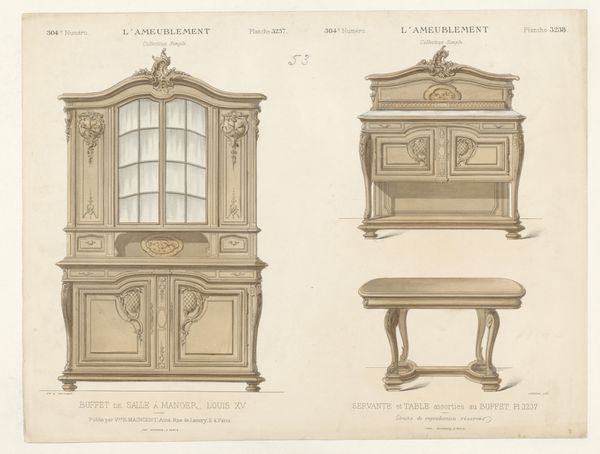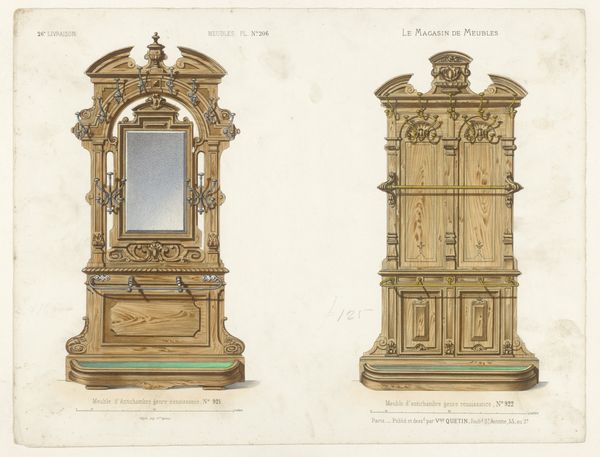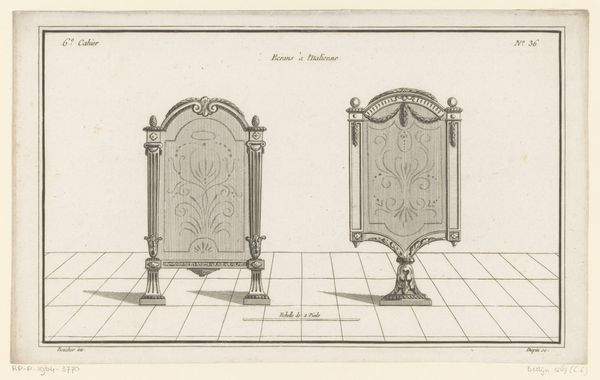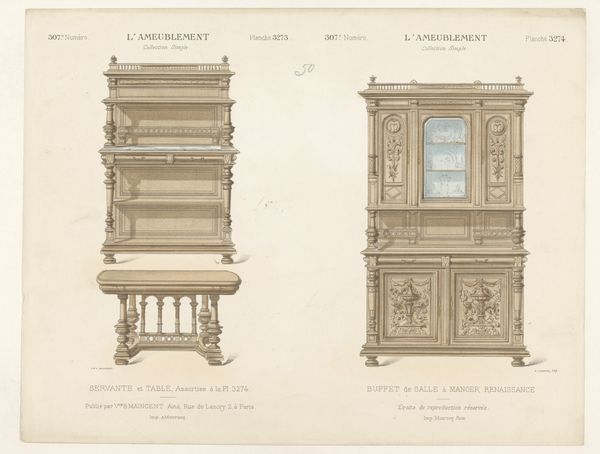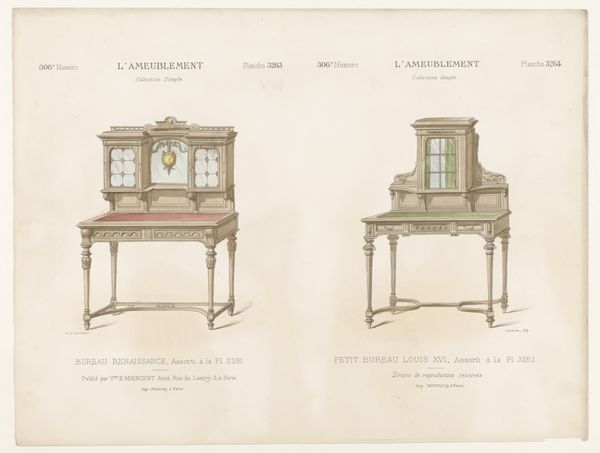
drawing, paper, pencil
#
drawing
#
art-nouveau
#
paper
#
form
#
geometric
#
pencil
#
line
#
decorative-art
Dimensions: height 273 mm, width 361 mm
Copyright: Rijks Museum: Open Domain
Curator: L\u00e9on Laroche created this drawing, "Twee kasten," around 1895. It's an ink and pencil design on paper featuring two cabinets. They strike me as embodiments of the Art Nouveau style, even though some period references can be made about each individual case. Editor: Immediately, what grabs my attention is the drawing's line work. Notice how it isn't just outlining but also creates volume through strategic hatching and shading. This is also what defines its aesthetic; a muted sensibility, the bare minimum, a kind of formal elegance. Curator: Absolutely. Laroche’s delicate touch echoes the subtle cultural shifts of the time, navigating between opulence and functionality. One might perceive those cabinets to be vessels holding not merely objects, but values--bourgeois values being curated within. Editor: Speaking of "values," notice the geometric forms juxtaposed with the curvilinear elements. The straight lines that define the overall cabinet shape are in counterpoint to the floral embellishments near the top. Do you read that as symbolic, as that transition suggested in the descriptions below each design? Curator: Undoubtedly, the blending of these contrasting elements represents transition. You see it, perhaps a bit literally stated, under the form of 'Transition Genre' on the left cabinet. These forms visually argue with one another—suggesting tension, cultural negotiations—in an era craving modernity but still deeply rooted in traditional motifs, and 'Genre Louis XV', more overt and obvious. Editor: Agreed. But stepping away from interpretation, I am captivated by the artist's use of empty space. The pale paper provides a perfect foil to these graphic statements, elevating the formal precision. Look at how negative space allows those lines to truly vibrate. Curator: This is why "Twee Kasten," despite depicting inanimate objects, speaks volumes about societal desires and the careful curation of aesthetics and social norms. Even the emptiness seems heavy with purpose. Editor: It is compelling how we can look at these silent architectural visions and hear the echoes of debates from a time very different from ours, captured through formal and ornamental arrangement on paper.
Comments
No comments
Be the first to comment and join the conversation on the ultimate creative platform.

